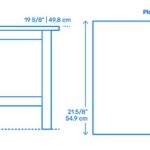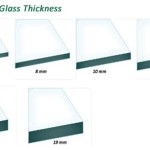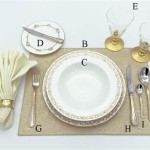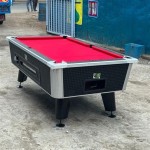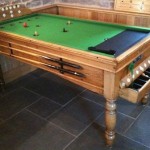The Enduring Appeal of Iron Table and Chairs
Iron table and chairs represent a significant category within furniture design, valued for their durability, aesthetic versatility, and historical significance. Ranging from ornate Victorian garden sets to minimalist modern designs, iron furniture’s robust nature allows it to withstand varied environmental conditions and heavy use, positioning it as a popular choice for both indoor and outdoor spaces. This article will delve into the distinct characteristics, advantages, maintenance requirements, and design considerations associated with iron table and chairs.
The term 'iron' in this context typically refers to either wrought iron or cast iron, each possessing different manufacturing processes and resulting properties. Wrought iron, traditionally hand-forged, is characterized by its malleability and tensile strength. It can be bent and shaped into intricate designs without fracturing, making it suitable for decorative elements. However, modern "wrought iron" furniture often utilizes mild steel in place of traditionally produced wrought iron, offering a similar aesthetic at a lower cost. Cast iron, on the other hand, is produced by pouring molten iron into a mold. This process allows for the creation of complex shapes and patterns but results in a more brittle material compared to wrought iron or steel.
Historically, iron furniture gained prominence during the Victorian era, reflecting the industrial revolution's advancements in metalworking techniques. Ornate designs, inspired by natural motifs such as leaves, vines, and flowers, were characteristic of this period. These pieces were frequently used in gardens and conservatories, adding a touch of elegance to outdoor spaces. As metalworking became more refined, iron furniture transitioned from purely functional items to objects of artistry and craftsmanship.
In contemporary design, iron table and chairs continue to hold relevance. While Victorian-inspired styles persist, modern interpretations often prioritize clean lines, geometric shapes, and a minimalist aesthetic. Powder coating, a durable and weather-resistant finish, has become increasingly common, offering a wide range of color options and protection against rust and corrosion. This adaptability allows iron furniture to seamlessly integrate into diverse architectural styles, from traditional to contemporary.
Durability and Longevity
One of the primary benefits of iron table and chairs is their exceptional durability. Unlike furniture made from materials like wood or plastic, iron is resistant to rot, insect infestation, and damage from moisture. This inherent robustness makes iron furniture particularly well-suited for outdoor environments where exposure to the elements is unavoidable. Properly maintained iron furniture can last for decades, making it a worthwhile investment over time.
The weight of iron furniture, while sometimes perceived as a disadvantage when moving pieces, contributes to its stability. This added weight prevents chairs and tables from being easily overturned by wind or accidental bumps, making them a safe and reliable option for high-traffic areas or locations prone to windy conditions. The structural integrity of iron also allows it to support significant weight, ensuring the furniture can accommodate a range of users and activities.
Despite its inherent strength, iron is susceptible to rust when exposed to moisture and oxygen. Regular maintenance, such as applying protective coatings and addressing rust spots promptly, is essential to preserve the furniture's structural integrity and aesthetic appeal. Modern powder coating techniques offer excellent protection against corrosion, significantly reducing the need for frequent maintenance. However, even with powder coating, periodic inspection and touch-up painting may be necessary, particularly in areas with harsh weather conditions or high humidity.
Aesthetic Versatility and Design Options
Iron table and chairs are available in a wide array of styles, ranging from traditional to contemporary, ensuring compatibility with diverse design preferences. Victorian-inspired designs featuring intricate scrollwork and decorative details evoke a sense of classic elegance. These pieces often incorporate elements such as floral motifs, geometric patterns, and ornate castings, adding a touch of historical charm to outdoor spaces.
More modern designs often prioritize clean lines, minimalist silhouettes, and geometric shapes. These pieces typically feature simple metal frames, often powder-coated in neutral colors such as black, gray, or white. This minimalist aesthetic allows the furniture to seamlessly blend into contemporary architectural styles and complements a variety of outdoor décors. The versatility of iron allows designers to create pieces that are both functional and visually appealing, meeting the diverse needs of modern consumers.
The finish of iron furniture plays a crucial role in its overall aesthetic. Powder coating, as previously mentioned, offers a durable and customizable finish, allowing for a wide range of color options and textures. Other finishing techniques, such as hand-painting, antiquing, and distressing, can be used to create unique and personalized pieces. The choice of finish will depend on the desired aesthetic and the intended use of the furniture. For example, a glossy powder coat may be preferred for modern designs, while a distressed finish may be more appropriate for rustic or vintage-inspired styles.
Iron furniture can also be combined with other materials to create unique and visually interesting designs. Wood tabletops, for instance, can be paired with iron bases to create a rustic yet elegant look. Glass tabletops can also be used with iron frames to achieve a more contemporary and sophisticated aesthetic. Upholstered cushions can be added to iron chairs to enhance comfort and provide an opportunity to incorporate color and texture into the design.
Maintenance and Care Considerations
While iron table and chairs are known for their durability, proper maintenance is essential to prolong their lifespan and preserve their aesthetic appeal. Regular cleaning to remove dirt, dust, and debris is a fundamental aspect of maintenance. A mild soap and water solution can be used to clean the surfaces of the furniture, followed by thorough rinsing and drying. A soft brush or cloth can be used to remove stubborn dirt or grime.
Rust is a common concern with iron furniture, particularly in outdoor environments. Inspecting the furniture regularly for signs of rust is crucial. If rust is present, it should be addressed promptly to prevent further damage. Loose rust can be removed with a wire brush or sandpaper. Once the rust has been removed, the affected area should be primed and painted with a rust-resistant paint. Powder-coated surfaces should also be inspected for chips or scratches, which can expose the underlying metal to moisture and lead to rust. These areas should be touched up with a matching powder coat or paint.
Applying a protective coating, such as wax or sealant, can help to prevent rust and protect the finish of the furniture. This is particularly important for furniture that is exposed to harsh weather conditions or high humidity. The protective coating should be reapplied periodically, following the manufacturer's instructions. Covering the furniture during periods of inclement weather can also help to protect it from the elements and reduce the need for frequent maintenance.
For iron furniture with moving parts, such as folding chairs or swivel bases, lubricating the joints and hinges periodically can help to prevent squeaking and ensure smooth operation. A light oil or silicone lubricant can be used for this purpose. It is also important to check the hardware on the furniture regularly, tightening any loose screws or bolts to maintain structural integrity. Replacing worn or damaged hardware as needed is also an important aspect of maintenance.
When storing iron furniture, it is important to choose a dry and well-ventilated location. Covering the furniture with a breathable tarp or cloth can help to protect it from dust and moisture. Avoid storing the furniture in direct sunlight, as this can cause the finish to fade over time. Following these maintenance and care tips can help to ensure that iron table and chairs remain in good condition for many years to come.
Ultimately, the selection of iron table and chairs represents more than a purely functional choice; it demonstrates an appreciation for enduring design, robust construction, and aesthetic versatility. The range of styles available allows for seamless integration into both classic and contemporary settings, while the inherent durability of iron ensures lasting value and enjoyment. Through proper maintenance and care, these pieces can provide years of reliable service and timeless elegance.

Wrought Iron Table And 4 Spring Rockers 482771017 473771004 At Turner S Fine Furniture

Black Vintage Wrought Iron Patio Furniture Set Table 6 Parlo Bistro Chairs

Meooem 5 Piece Outdoor Patio Square Dining Table Set Metal Bistro With 1 57 Umbrella Hole And 4 Wrought Iron Chairs Meogfc04 5set The Home Depot

Suncrown 7 Piece Metal Outdoor Dining Set With 6 Stackable Chairs And 1 Rectangular Table 57 In Umbrella Hole Hd 3pcscy1pcccz The Home Depot

Seasonal Concepts Wrought Iron Mesh 5pc Coil High Back Dining Set By Woodard

Vintage Umanoff Table Set Of 8 Chairs Mid Century Modern Wrought Iron Furniture

Outdoor Patio Furniture Sets Dining Table Cast Aluminum Chair Use For Garden Iron Tables And Chairs Aluminium Set China Metal Made In Com

Garden Table Made Of Mosaic With 4 Chairs Wrought Iron Patio Set Bistro Moroccan Decor

Vintage Wrought Iron Table And Chairs Update

Vintage Woodard Wrought Iron Patio Set Glass Top Table With 4 Chairs
Related Posts

